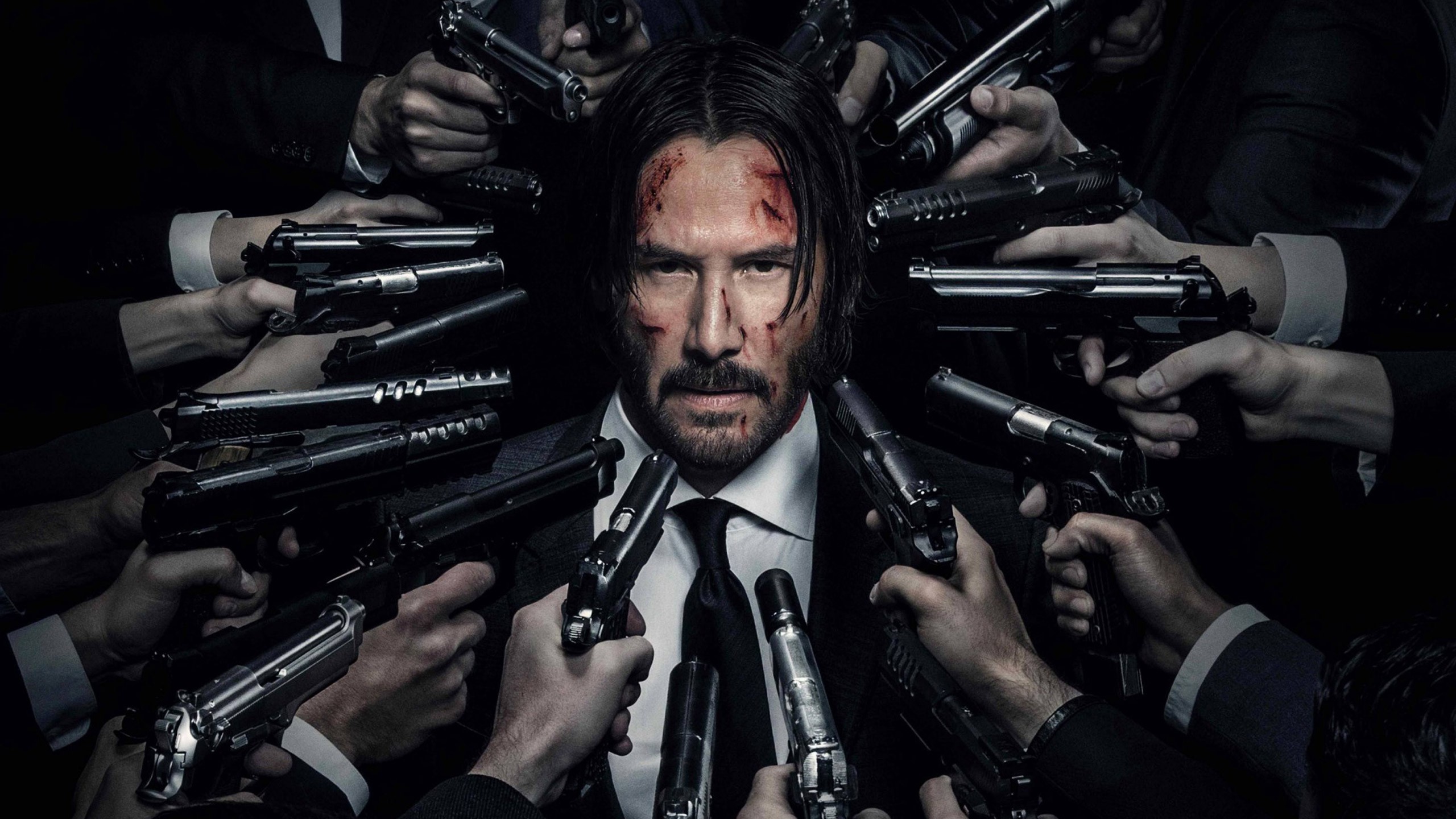The action thriller “John Wick” premiered in 2014 and starred Keanu Reeves as a retired hitman who is pulled back into the seedy underworld of hitmen and organized crime after the murder of his puppy. “John Wick” both revolutionized and did irreversible damage to the action genre.

Lionsgate
“John Wick Chapter: 4” featured a fight sequence in a club, complete with neon lighting and a rain feature, effectively keeping the attention of the audience despite what could have been a repetitive nearly three-hour movie.
The film’s stylistic fight sequences and constant jump cuts drew recognition from audiences and critics alike, spawning three movies, a tv mini series and a growing list of copycat films.
Keanu Reeves, known best for his cult classic roles in “The Matrix” trilogy and the stoner comedy “Bill and Ted’s Excellent Adventure” plays the titular character of John Wick. Reeves has long been a semi-controversial actor in terms of his acting abilities, but the role of Wick has since endeared him to even the most critical of movie goers.
The neatly dressed hitman with a soft spot for dogs rarely speaks, averaging less than five-hundred words each movie. Not only does this shift the focus more towards the action sequences rather than plot, it allows Reeves to focus more on his facial expressions and less on his line deliveries, which have often been criticized.

MGM Studios
“The Beekeeper” in keeping with the theme, also features a fair amount of neon lighting, as Jason Statham hunts scammers.
The “Razzies”, a parody of the Oscars in which awards are given to the worst movies and acting of the year, nominated Reeves for the Razzie Redeemer award for the role of John Wick.
Where action movies once relied on shaky-cams and frenetic filming for action sequences, the current trend is unflinching in its graphic violence and elegant in its choreography.
“The Beekeeper”, “Violent Night”, “Silent Night”, “Nobody” and the recent release “Monkey Man” are all films that have drawn comparisons to “John Wick” in their fighting choreographies and action-driven plots. Not to mention, most of them revolve around a central character, a silent tough guy with origins in a shady underground organization.
The fight sequences are choreographed fluidly and work alongside the camera, making sure the audience doesn’t miss any of the gory aftermath. There’s also almost always an unlimited arsenal of weapons for the main fighter to use, with script writers consistently looking for the next ‘coolest kill’ to set their film apart.
As the current trends continue to focus more on the action and gore of the fight sequences, the action and horror genres blend closer together. Perhaps there’s something to be said with Hollywood’s overfixation on violence and the American public’s perception of it. But for now, the fights look cool.
The style of fighting in “John Wick” isn’t the only thing that made the franchise appealing to moviegoers and competing studios. The inclusion of a mysterious hitman agency with an arsenal of weapons and interconnected communication systems was seemingly intriguing to audiences and writers alike, since it’s a concept that has been repeated dozens of times since the release of “John Wick”.
“The Beekeeper ” for example, stars Jason Statham as a retired hitman who is pulled back into the seedy underworld of hitmen and organized crime after the murder of his…bees. Sound familiar?

20th Century Fox
Bruce Willis in “Die Hard” back when the action protagonists were guys in white tank tops instead of kevlar suits.
“Monkey Man” Dev Patel’s (Slumdog Millionaire, Skins) directorial debut was dubbed a “John Wick” clone as soon as the first trailer dropped. “Monkey Man” is self-aware of how it is being advertised, name-dropping “John Wick” in a scene where Patel’s character is looking for a weapon.
While “Monkey Man”’s fight sequences are strikingly resemblant of “John Wick”s own, “Monkey Man” rests more on a plot-heavy story. The marketing plan seemed to rely on “John Wick” fans coming for the fights and staying for the socio politically relevant plot points, a strategy that seems to have worked given the $30 million box office gross it’s seen so far.
While not as action motivated as the others, “Monkey Man” does feature a scene that has been gradually becoming a staple of these era of action flicks, the club scene.
Neon lighting and a 130 bpm bass boosted soundtrack accompany most of the action sequences in the movies following the first “John Wick”, a trend that nearly each new action movie incorporates, to the enjoyment of the audience.
Action movies as a genre tend to rely on trends and successful formulas that change based on current world events, pop culture trends or box office successes.
The action classic “Die Hard” premiered in 1988, starring Bruce Willis as a New York cop caught in the middle of a terrorist takeover of the Nakatomi Tower. The film has had a lasting impact on pop culture, with four direct sequels and a consistent slew of references across media over the years.
“Die Hard” had its own series of clones following the box office success, with titles such as “Con Air”, “The Rock”, “Snakes on a Plane” and “Speed” following along the formula established through Willis’ character of a street cop thrust into a hostage situation.
“John Wick” is a lasting example of how action movies have evolved and continue to evolve over the years, with each movie taking elements from their predecessors. The emphasis on over choreographed fight sequences and makeup elements allow actors and audiences to take a break from convoluted plots and simply sit back and watch someone get beat up for upwards of two hours.

